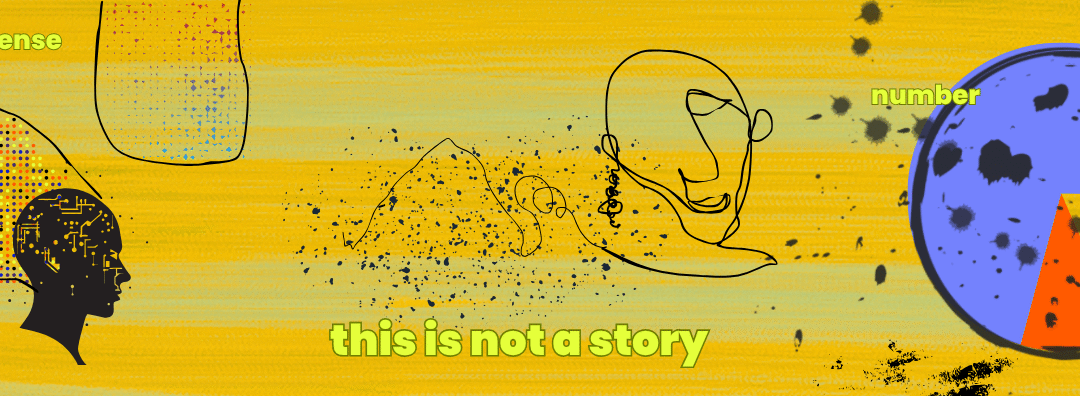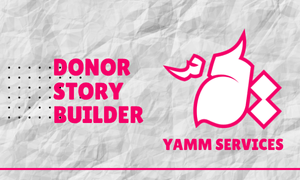A report says “83% completed the program.” That is tidy, but it is quiet. Then you hear Amira say, “I slept through the night for the first time in months.” Now the number has a heartbeat. Data becomes a story when we show the before, the step taken, and the shift. One metric. One voice. One image. Enough to help supporters feel the change and act on it.
This guide shows a simple pattern any team can use this week. We will choose a small unit of change, pair one number with one human moment, and publish a short, ethical story that is easy to reuse across channels. Less noise. More meaning. More trust.
Why data needs storyThe 5-beat micro-story arc
Dashboards organize information. Stories organize meaning. People rarely remember raw percentages. They remember clear arcs that explain what changed and why it matters.
Think in units of change. Pick a small slice you can describe without jargon.
- One person.
- One week.
- One neighborhood.
When you shrink the frame, you sharpen the insight. The goal is not to show everything. The goal is to help a supporter understand one real shift they made possible, then invite them to power the next mile.
What stories add that dashboards cannot
- Context. What life looked like before the intervention.
- Causality. Who did what and how it led to the change.
- Meaning. Why this change matters for a person and a community.
- Memory. A form that sticks. Setup. Tension. Resolution.
Do it now
Replace one statistic in your last update with a 3–4 sentence story that includes a before, an action, and a shift. Send it to one colleague and ask, “Is the point clear in three seconds?”
The 5-beat micro-story arc
Use this tiny scaffold to turn any small data slice into a story you can publish fast.
- Baseline. What was true before. One sentence.
- Action. What happened. Who did what. One or two sentences.
- Shift. What changed for the person or place. One sentence.
- Evidence. The metric that confirms it. One sentence.
- Next mile. What comes next that supporters can power. One sentence.
Formula
1 metric + 1 quote + 1 image.
That is it.
Example A: Program completion
- Baseline: Before the youth workshop series, fewer than half of participants turned in a complete portfolio.
- Action: Mentors held two Friday drop-ins, with snacks and quick critiques.
- Shift: “I finally hit submit,” Karim said.
- Evidence: Completion rose from 47% to 83% in four weeks.
- Next mile: Help us keep the studio open on Fridays for the fall cohort.

Example B: Helpline response time
- Baseline: Parents told us they waited until morning to call, then gave up after long holds.
- Action: We added a callback feature and trained two evening volunteers.
- Shift: “I got a call back in eight minutes,” Maya said.
- Evidence: Average response time dropped from 46 minutes to 12 minutes.
- Next mile: Fund two more evening shifts to reach families after work.
Example C: Community connection
- Baseline: Newcomers reported feeling isolated in their first months.
- Action: The community center started tea-and-skills circles led by local artisans.
- Shift: “I left with two phone numbers and a plan,” Rana said.
- Evidence: 72% of attendees met someone they plan to see again.
- Next mile: Sponsor materials for six more circles this winter.
Do it now
Open a spreadsheet. Pick one metric that moved. Find one quote in your notes. Choose one image or simple chart. Draft the five beats. Stop at 120 words.
How to choose the right number?
Now, how do you find the right number in a noisy spreadsheet? Begin by picking a unit of change that feels human-sized; one person, one week, one neighbourhood. Then scan for a metric that is close to the moment of change, not miles downstream. Look for leading signals: time to first response; attendance at the thing that unlocks the next thing; the first “yes” a participant can give. These are often more truthful—and more motivating—than big, end-of-year totals. When in doubt, choose the smallest honest number that shows movement and you can explain without jargon.
Next, filter for alignment with your mission and values. If your mission promises access with dignity, don’t lead with a flashy completion rate while ignoring who was left out. Slice the number in a way that reflects your ethics: show the change for parents who speak Arabic and for those who don’t; for youth in after-school jobs and those who aren’t working. If gaps persist, say so and name what you’re changing. A metric aligned with your values is one that honours people, shows progress without spin, and points to the work still to do.
When you have your metric, pair it with a real voice. Go back to case notes, voice memos, WhatsApp chats. Find a line that sounds like a person, not a brochure—“I slept,” “I finally hit submit,” “I left with two phone numbers.” This is your shift in plain language. The quote does the feeling; the number does the proof. Together, they keep the story balanced—neither sentiment without substance nor data without life.

Pictures and Charts
Pictures and graphs are simply two ways of showing the same truth. Use a photo when the feeling leads: a parent’s hand on a phone, a sketchbook on a studio table, a tea circle in a community room. Use a graph when clarity leads: a short bar that jumps from 47% to 83%; a simple line that falls from 46 minutes to 12. Either way, write a caption that answers three things in one sentence: what changed, why it matters, and what’s next. If you can’t write that sentence, the image isn’t ready.
Often the strongest choice is a mix: a face or place to anchor meaning, plus a small figure to anchor trust. Keep pictures respectful and consented; keep charts spare and legible. No chart junk, no mystery colours, no axes that bend the truth. Title the graph with the finding itself (“Evening callbacks now average 12 minutes”) and add alt text that says what a screen reader needs to know. If privacy is delicate, use hands, tools, rooms, or a back-of-the-head angle rather than a full portrait—and let the number carry more of the load.
Make it Simple
In the end, the work is simple practice: choose one human-sized slice, find the smallest honest number that moved, match it with one true voice, and show it with a picture or a clean graph. Publish the micro-story, then repeat next month with the same pattern so your audience learns how to read your impact. One metric. One voice. One image. That’s enough to keep the data warm and the trust growing.
Download YAMM DONOR STORY BUILDER
This toolkit provides non-profit professionals with the essential guide, matrix, and checklist to capture and craft powerful donor stories that position supporters as trusted witnesses and crucial Helpers, shifting the focus from individual heroism to collective community transformation.
Author Bio
Ali Zaraket brings over 15 years of experience in nonprofit communication, documentary making and journalism to his role as Lead Communication at YAMM Services Inc..
With a background in journalism and commitment to social activism, Ali is deeply passionate about helping nonprofit organizations effectively communicate their mission and engage with key stakeholders.
Throughout his career, Ali has provided communication strategy and training to hundreds of professionals from a wide range of disciplines. When he’s not working with clients, you can find Ali volunteering for local nonprofits, or spending time outdoors with friends and family.


